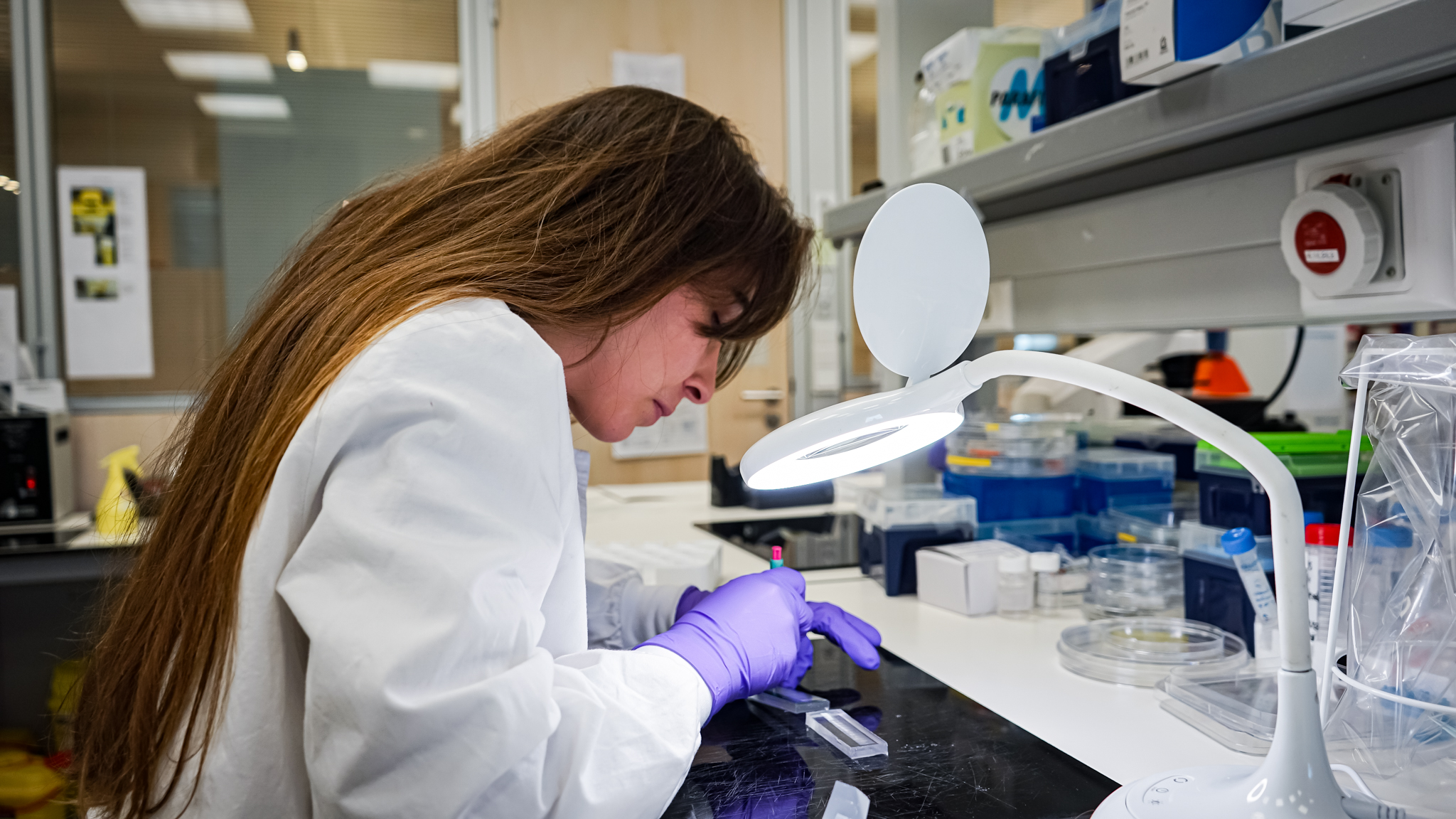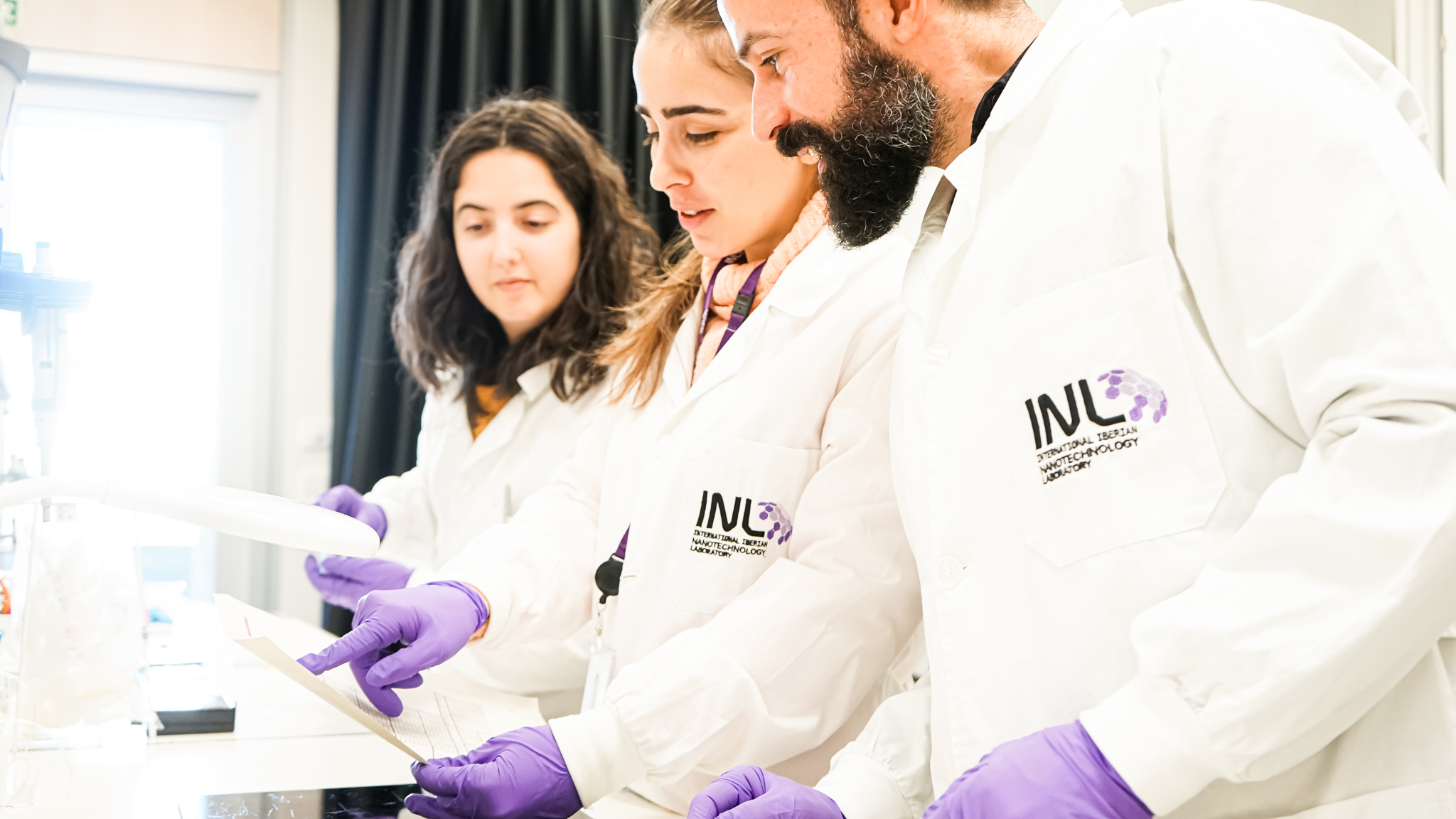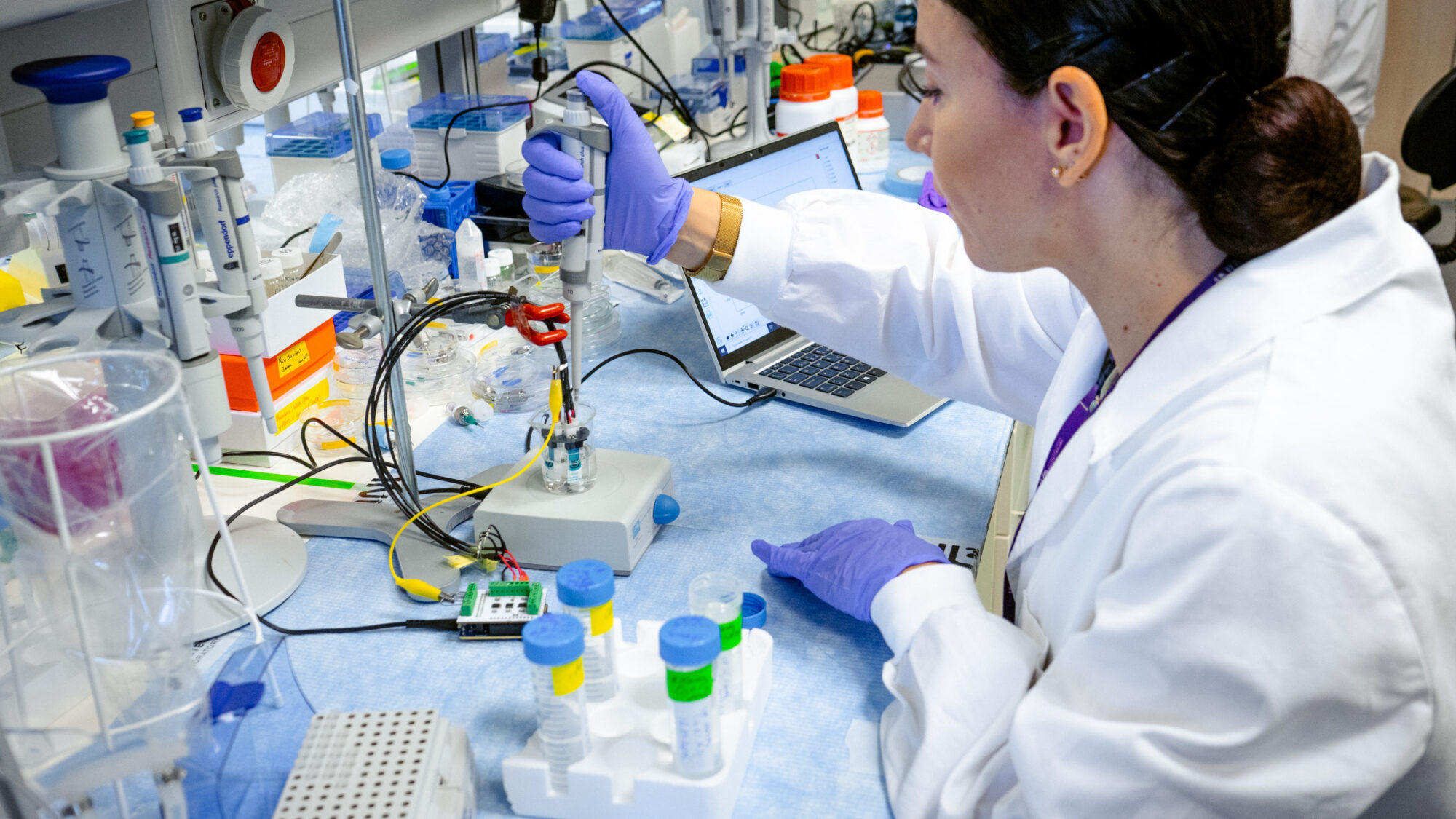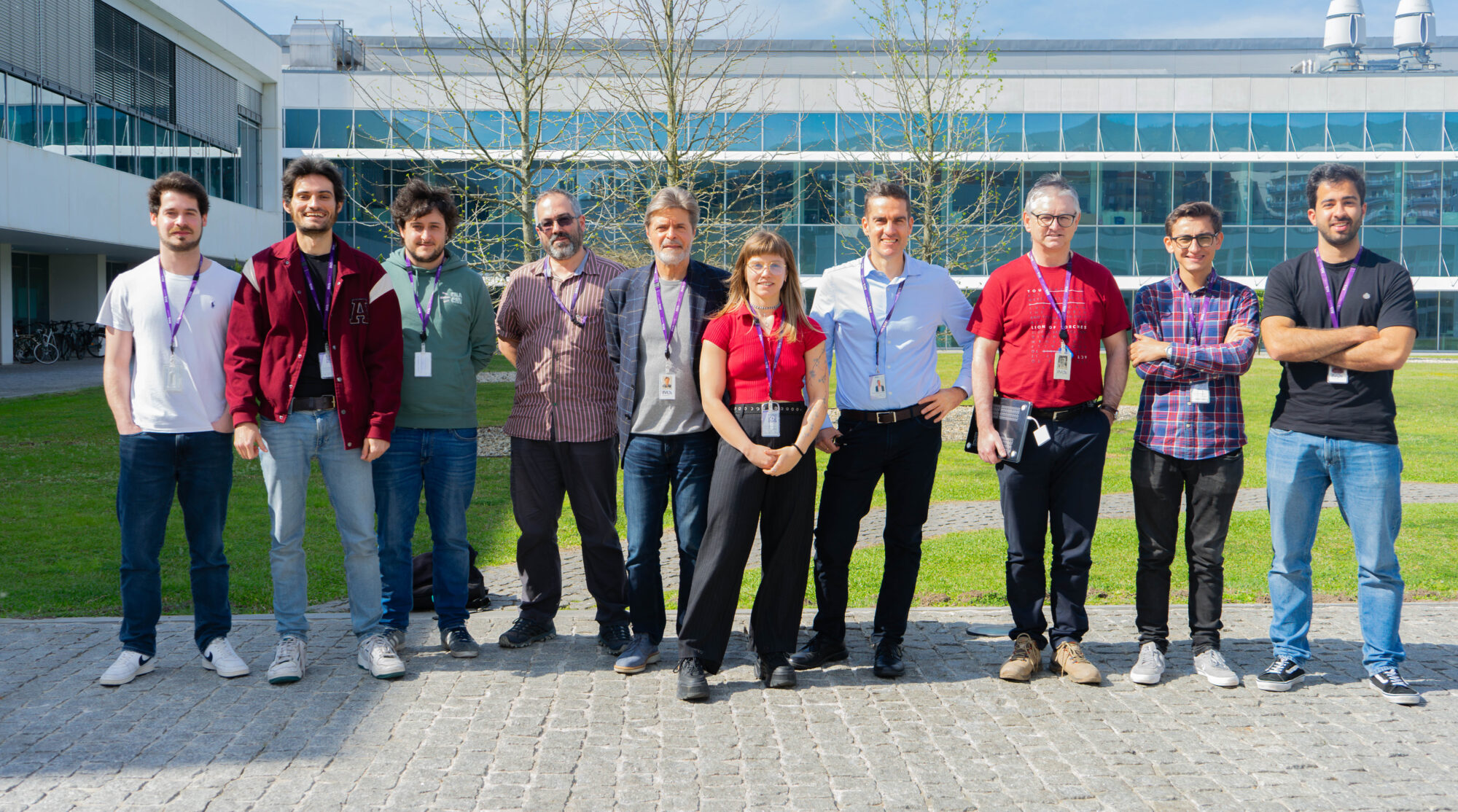
Breakthrough technology for cancer diagnostics
July 8, 2024
INL researchers are part of the consortium behind BIOCELLPHE, a pioneering project focused on advancing cancer diagnostics and personalised medicine. This innovative European-funded project is at the forefront of scientific and technological innovation, introducing a groundbreaking technology for identifying proteins as diagnostic biomarkers at the single-cell level. This new approach offers multiplexing capabilities, portability and enhanced sensitivity.
Alexandra Teixeira, research fellow at the Medical Devices group, highlights that “BIOCELLPHE is pioneering the use of engineered bacteria to recognise and bind with high specificity to protein targets on the surface of circulating tumour cells, or CTCs, which are key players in cancer metastasis.”
This specific binding of engineered bacteria to CTCs subsequently triggers the production of molecules (Raman reporters), which can be detectable with high sensitivity using surface-enhanced Raman scattering (SERS). More specifically, SERS uses plasmonic nanoparticles to enhance Raman signals, allowing ultrasensitive analysis and detection at the single molecule level.
The pathological role of CTCs in cancer metastasis is not completely understood due to the lack of effective analytical tools and remains an area that needs further exploration. BIOCELLPHE addresses this gap by developing new tools for the phenotypic identification of CTCs at the single-cell level, with high-throughput and multiplexing capabilities. This ambitious project brings together a multidisciplinary team of experts in synthetic biology, nanotechnology, plasmonics, microfluidics, artificial intelligence, and cancer diagnosis.
Sara Abalde-Cela, research group leader, adds “BIOCELLPHE is using these developments to create an optofluidic lab-on-a-chip SERS device, which is capable of ultrasensitive identification and multiplex phenotyping of CTCs. This cutting-edge technology is anticipated to have far-reaching applications beyond diagnostics, including biomedical and environmental fields.”.
In summary, BIOCELLPHE’s workflow involves two innovative lab-on-a-chip devices. First, a blood sample from breast cancer patients is processed using the RUBYchip device. Next, the lab-on-a-chip SERS device combines these CTCs previously isolated with genetically engineered bacteria designed to recognise specific surface proteins. These bacteria generate a Raman reporter, which accumulates in each microdroplet and is detected using the built-in SERS substrate in the second lab-on-a-chip. Finally, AI tools analyse the data, providing oncologists with detailed subtyping of CTCs for each patient, offering significant potential for personalised therapy guidance.
While previous efforts faced challenges and technical limitations, BIOCELLPHE promises to overcome these barriers and pave the way for a revolutionary technology. The successful deployment of BIOCELLPHE could contribute to the new era of medical diagnostics, advancing frontier science and technologies in European academic and industrial sectors.
BIOCELLPHE has received funding from the European Union’s Horizon 2020 research and innovation programme under Grant Agreement No #965018.

Text by Catarina Moura
Videography by Catarina Moura & Filipa Bernardo
Photography by Gina Palha


